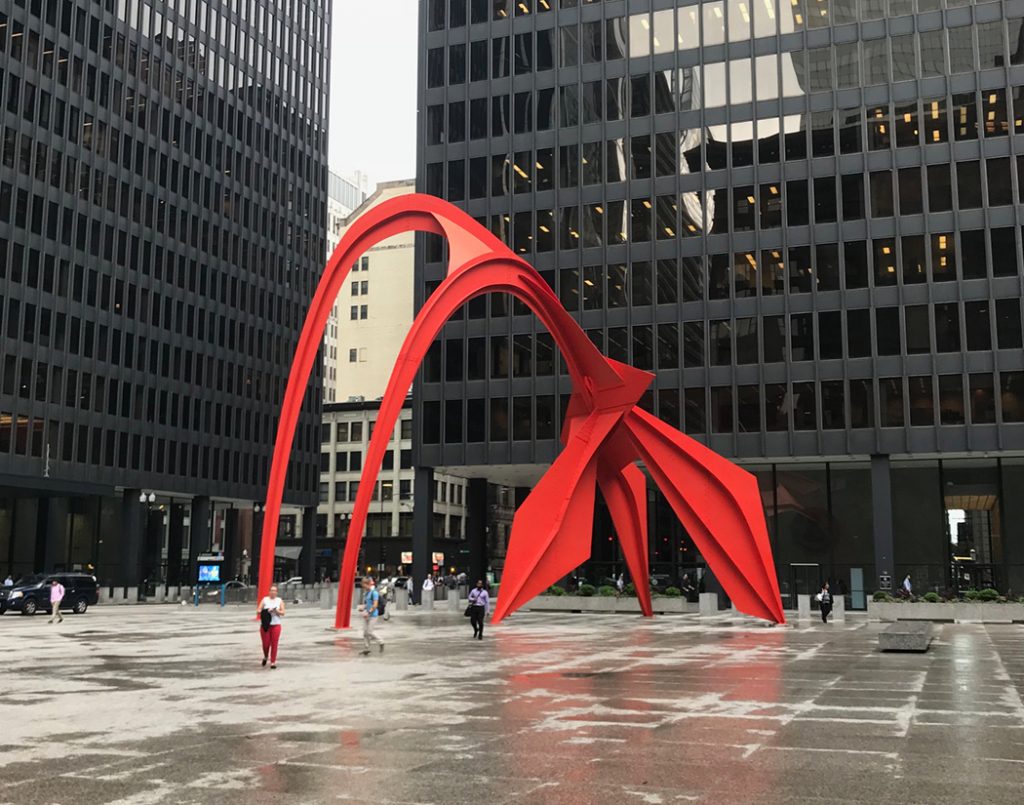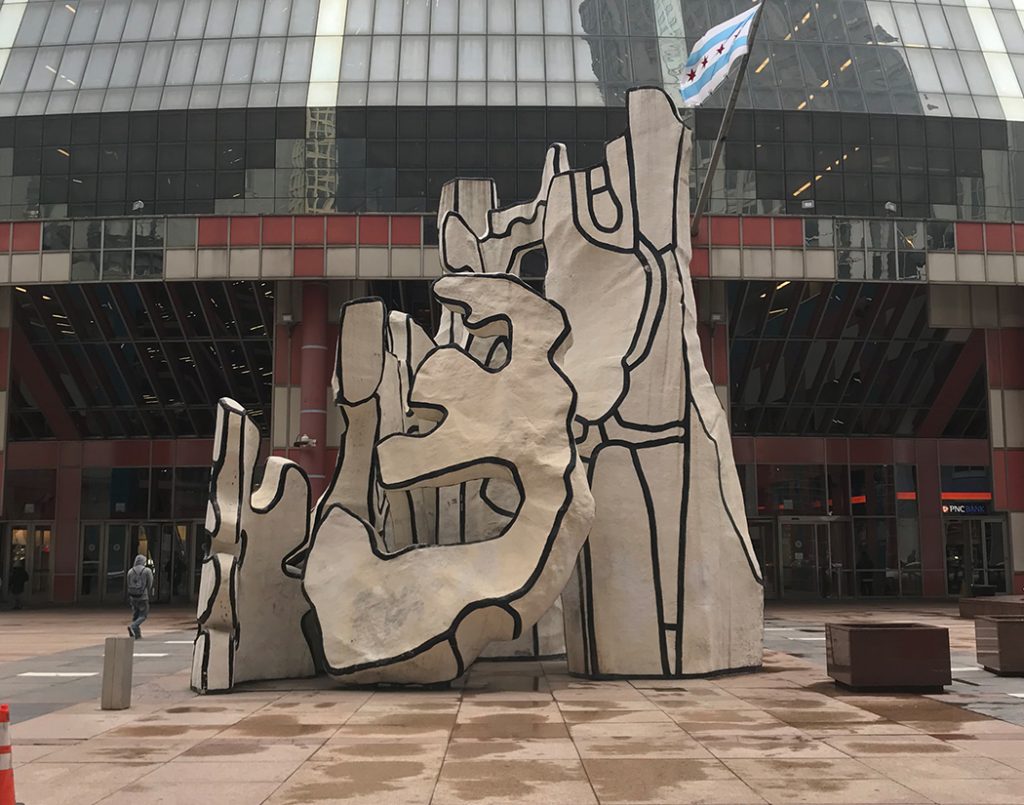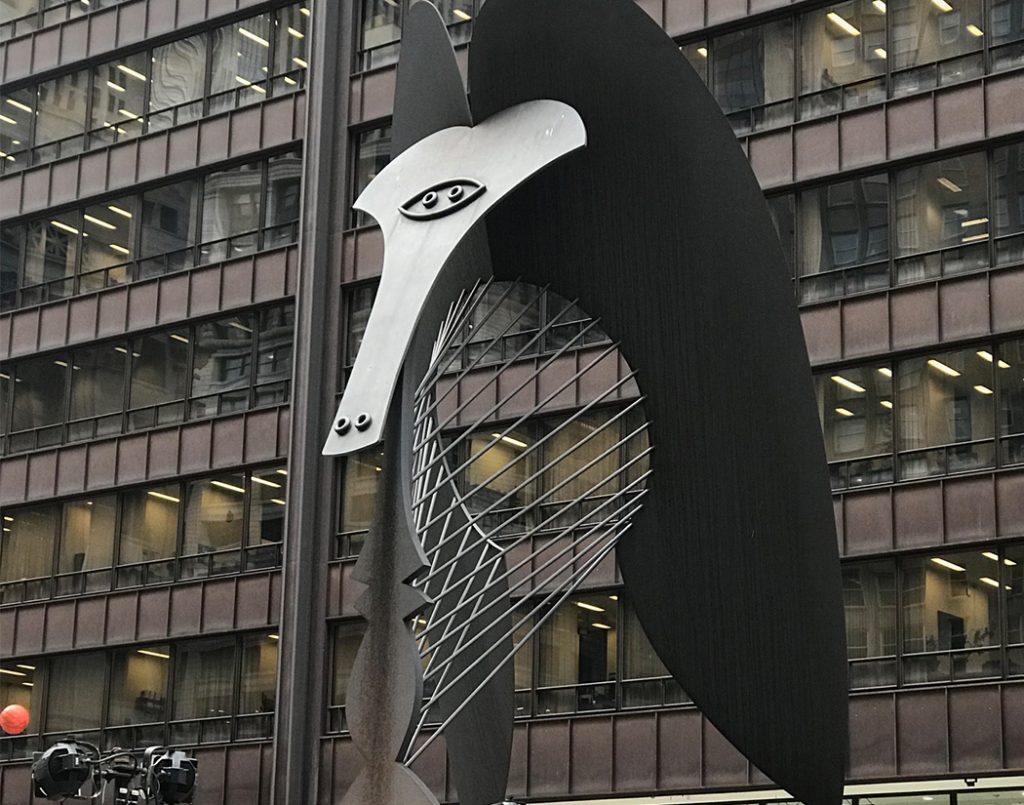
Know Your Chicago
It’s safe to say you can walk down any street in the loop and find some amazing public art within a minute or two. How many times have you walked by the bright red dinosaur looking sculpture (Clader’s Flamingo) on Dearborn and wondered who created it or where in came from? You may have noticed certain works in movies, magazines, and photographs. In The Loop has chosen three of the more popular pieces of public art in Chicago to help expand your knowledge of who did what and why. This way, the next time you are walking around the city with your friends or family, you can look like a public art expert.

1. Clark and Randolph
Title: Monument with Standing Beast
Artist: Jean Dubuffet
This sculpture stands nearly 30 feet tall and is documented for representing an animal, tree, portal, and an architectural form. The piece was completed in 1984 and has been an iconic work in Chicago ever since. Jean Dubuffet was a french artist who passed away in 1985. Dubuffet was also know for facilitating the “Art Brut” or “outsider” movement, a movement that allows artist to be self taught in their medium of choice.

2. Adams and Dearborn
TITLE: Flamingo
ARTIST: Alexander Calder
Unveiled in 1974, the 53 foot sculpture’s bright red paint stands in stark contrast to the minimalist designs of the buildings surrounding it. If you’ve ever been near this sculpture you have the instant desire to walk under and around the piece. You can’t go five minutes without seeing someone nearby pose for a photo or photograph a model for a class project. Calder was well-known for making kinetic sculptures, whereas this piece was part of the constructivist movement (sculptures created by assembling pieces together).

3. Dearborn and Washington
TITLE: Untitled (known as “The Picasso”)
ARTIST: Pablo Picasso
Walk into any tourist shop in the city and you will see this sculpture on coffee mugs and t shirts. Unveiled in 1967, the sculpture by the legendary Pablo Picasso was know as Chicago’s first piece of major public artwork. Fifty feet tall, there has never been an official explanation as to what the piece actually represents. Picasso didn’t receive any payment for making the statue, he insisted that it be a gift to the city of Chicago. Initially met with mixed reviews, the piece has become an iconic symbol of the downtown area.
